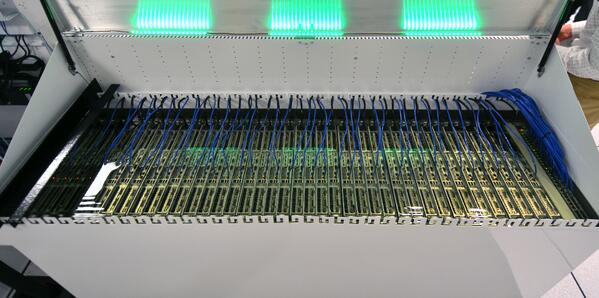Not too long ago, data center energy efficiency was an obscure and almost irrelevant topic of discussion for building managers and engineers. As our economy becomes increasingly digitized and productive, more and larger data centers have been developed to meet the digital demand. The media has recently reported that data centers now use close to 2 percent of global annual energy consumption. At this level of energy consumption, data center energy efficiency has rapidly become an important consideration for achieving energy conservation goals.
Data center energy management opportunities
In this blog, we have discussed several opportunities for managing data center energy consumption. One such opportunity that has the potential to significantly transform how we achieve data center energy efficiency/conservation is direct liquid cooling. Direct liquid cooling is simply the use of a liquid heat transfer fluid (e.g., water) to transfer heat away from data center servers. Typically, this involves pumping water through heat transfer devices that are connected to server processors and memory modules. Contemporary data centers are cooled by space air, which is an intermediate heat transfer medium between a chilled water or DX system and server heat dissipation. Space air cooling is the de-facto industry standard for data center cooling designs, but it unfortunately presents significant limitations for capacity, reliability, and efficiency. Server power densities are becoming so great that the heat dissipation requirements of data centers can exceed the heat transfer capabilities of space air cooling designs.
 Image by Green Revolution Cooling. 42U Rack filled with GPU-accelerated servers. http://www.grcooling.com/
Image by Green Revolution Cooling. 42U Rack filled with GPU-accelerated servers. http://www.grcooling.com/Advantages of direct liquid cooling
Direct liquid cooling offers several unique advantages over space air cooling. The most obvious advantage is the elimination of supply air and return air systems, which results in a significant reduction in cooling system power demand (i.e. elimination of fan power). Furthermore, elimination of supply/return airflows addresses the challenges of effective “hot aisle” and “cold aisle” airflows to/from server racks. Another advantage of direct liquid cooling is the opportunity to eliminate the need for vapor compression refrigeration (e.g. a chiller plant or DX cooling). Direct liquid cooling allows the use of significantly higher temperature water for cooling, in some cases as high as 110 deg. F, thereby allowing heat rejection via closed-circuit coolers. Importantly, the higher temperature water effectively supports “water-side” economizer operation year-round in most climate zones. Many data centers in recent years have been located in remote, high latitude regions for the benefit of air-side economizer operation and low cost electric power, typically from hydro-electric power generation. Direct liquid cooling may slow the trend toward high-latitude locations by offering significant economizer operation at lower latitudes, and lower power/energy consumption in locations with higher electric utility rates.
Out-of-date fears
Direct liquid cooling has so far been implemented in only a few major government data centers. “Hygrophobia” persists in the industry (i.e., a fear of pumping water through server cabinets) and has moderated the implementation of direct liquid cooling systems. Although there is some risk associated with pumping water through a server cabinet, the technology eliminates common risks associated with air-side economizer systems: humidification and filtration of outdoor air. It should be noted that the U.S. Department of Defense, an organization focused heavily on risk mitigation and system reliability, is one of the leading implementers of direct liquid cooling in data centers.
The direct liquid cooling future
Here in the northeast U.S., where ambient temperatures are low and energy costs are relatively high, direct liquid cooling provides a great opportunity for improved data center design and operation. As the market for direct liquid cooling technology matures, I look forward to the opportunity to help leading designers and facility managers leverage direct liquid cooling for data center efficiency.




